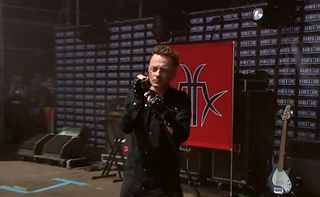
The Russian Academy of Arts in Saint Petersburg, informally known as the Saint Petersburg Academy of Arts, was founded in 1757 by the founder of the Imperial Moscow University Ivan Shuvalov under the name Academy of the Three Noblest Arts. Catherine the Great renamed it the Imperial Academy of Arts and commissioned a new building, completed 25 years later in 1789 by the Neva River. The academy promoted the neoclassical style and technique, and sent its promising students to European capitals for further study. Training at the academy was virtually required for artists to make successful careers.

Ural Economic Region is one of twelve economic regions of Russia. This prominent industrial region consists of the following subdivisions : Bashkortostan (Ufa), Chelyabinsk Oblast (Chelyabinsk), Kurgan Oblast (Kurgan), Orenburg Oblast (Orenburg), Perm Krai (Perm), Sverdlovsk Oblast (Yekaterinburg) and Udmurt Republic (Izhevsk). It is mostly located in the Central, and partly in the Southern and Northern parts of the Urals, but also includes parts of the East European and West Siberian Plains. Its extent is different from that of the Ural Federal District; Bashkortostan, Orenburg Oblast. Perm Krai and Udmurtia are in the Volga Federal District while the other three are in the Ural Federal District.
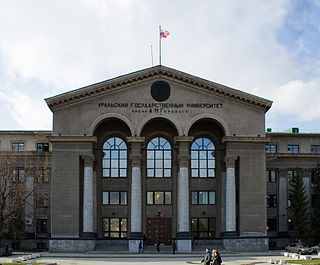
The Ural State University is located in the city of Yekaterinburg, Sverdlovsk Oblast, Russian Federation. Founded in 1920, it was an exclusive educational establishment made of several institutes which later became independent universities and schools.
Ural State Mining University is situated in Yekaterinburg, Russian Federation. It was founded in 1914. In 1917 Nicholas II signed an order titled "On keeping of the Yekaterinburg Institute of Mines under the patronage of His Majesty the Emperor and on giving to this educational establishment the title of The Emperor Nicholas II Ural Institute of Mines".

Moscow State Stroganov Academy of Industrial and Applied Arts informally named Stroganovka (Строгановка) is one of the oldest Russian schools for the industrial, monumental and decorative art and design. The University is named after its founder, baron Sergei Grigoriyevich Stroganov.
Siberian State Technological University is the oldest university in Krasnoyarsk, Russia. It was established in 1930 as the Siberian Institute of Forest. Later it was known as the Siberian Technical Institute of Forest, Siberian Technological Institute, Krasnoyarsk State Technological Academy and finally the Siberian State Technological University.
The Chita State Academy of Medicine is an institution of higher education in Chita, Russia. It was founded on 23 July 1953 as the Chita State Institute of Medicine. The institute was composed of the lecturers of the Perm Dentist Institute evacuated to Chita during World War II.

Urals Mussorgsky State Conservatoire is a musical university in Yekaterinburg, Sverdlovsk Oblast, Russia.
Institute of International Relations is a private academic institution located in Yekaterinburg, Sverdlovsk Oblast, Russia. It has a state accreditation. It is one of the oldest private higher education providers in Yekaterinburg, and was originally established as the Yekaterinburg College of Foreign Languages in 1994 by the Urals Architecture and Art Academy and private individuals. Formerly a liberal arts college, it has been preparing professional translators. The institute has been conferring specialist degrees since 1997.

Alexander Nikolayevich Samokhvalov was a Soviet Russian painter, watercolorist, graphic artist, illustrator, art teacher and Honored Arts Worker of the RSFSR, who lived and worked in Leningrad. He was a member of the Leningrad branch of Union of Artists of Russian Federation, and was regarded as one of the founders and brightest representatives of the Leningrad school of painting, most famous for his genre and portrait painting.
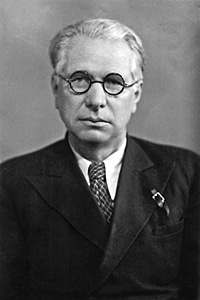
Rudolf Rudolfovich Frentz is a Soviet and Russian painter, watercolorist, graphic artist, illustrator, and art teacher who lived and worked in Leningrad. He was a member of the Leningrad Union of Artists and one of the founders of the Leningrad school of painting, most famous for his battle and monumental painting.

The Belarusian State Academy of Arts is a state-owned institution of higher education in Minsk, Belarus. The Belarusian State Academy of Arts has status as a leading institution of the national system of art and cultural education alongside the Belarusian State Academy of Music and the Belarusian State University of Culture and Arts.

Ural State Law University, is a public, research university which includes law schools, colleges, faculties and other public graduate and undergraduate educational institutions. USLU's main campus is situated in the Yekaterinburg, Russia. Founded in 1931, USLU is one of the largest law schools in the Russian Federation. USLU is organized into 15 schools, colleges, and institutes, located in centers and campuses throughout Yekaterinburg, Ufa and Chelyabinsk. USLU operates international scientific relations facilities in London, Helsinki, Astana, Berlin, Kiev, and Minsk. The university is commonly regarded as one of Russia's most prestigious university and has high entry requirements for its prospective students. National Universities rankings ranked the academy in 5 place of the best Law schools in the Russian Federation. The Federal Agency for Scientific Research in information and telecommunication technologies of The Russian Federation ranked USLU in the 2nd position for the best law schools in Russia in 2008. In 2004, USLA was awarded by Gold Medal in "One hundred best universities in Russia".
Moscow Architectural Institute - MArchI is a famous architecture school located in Moscow, Russia.
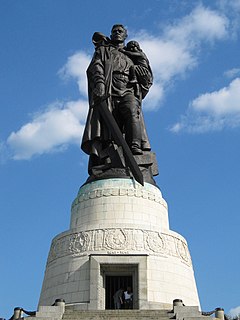
The year 1949 was marked by many events that left an imprint on the history of Soviet and Russian fine arts.
Alexander Grigoryevitch Fridlender was a Soviet composer, pianist and conductor, Professor at the Urals Mussorgsky State Conservatoire.
Vladimir Pavlovich Biryukov was a Soviet ethnographer, lexicographer, museum worker, archaeologist, historian, folklorist, and the author of over 30 books. He specifically studied the folklore of the Ural region of Siberia.
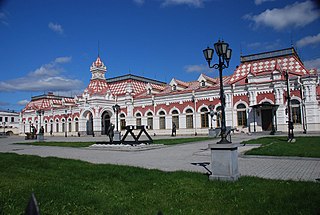
The old station building is an edifice in the Zheleznodorozhny District of Yekaterinburg, Russia. The house is located at 14 Vokzalnaya Street It was a main station building between 1878 and 1914. The building was designed in the Russian Revival style. It is recognized as a historical landmark, has official status as an object of Russian cultural heritage, and contains the museum of History & Engineering science of the Sverdlovsk Railway.

Building of State Institutions is a building in Tsentralny District of Novosibirsk, Russia. It is located on the corner of Krasny Prospekt and Ordzhonikidze Street. The building was built in 1924–1925 by architect Andrey Kryachkov. In the 1930s, it was reconstructed by S. I. Ignatovich.






